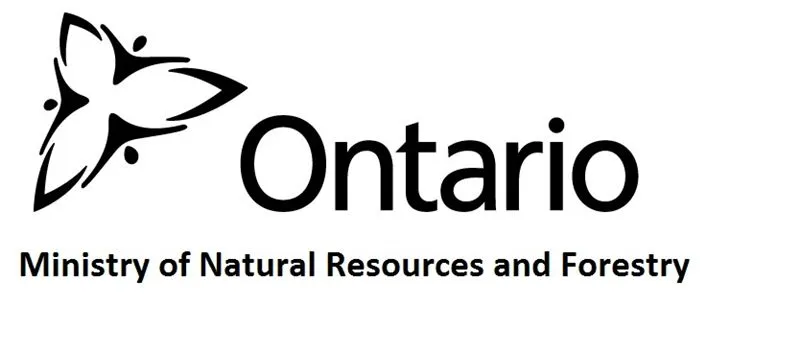A crowd of excited forest and conservation history buffs greeted us as we arrived at the University of Guelph’s Arboretum on an exquisite spring Friday morning. The Arboretum Centre (not shown) was designed by famous Canadian architect, Raymond Moriyama (also designed Ontario Science Centre and the National War Museum in Ottawa) which celebrates its 50th anniversary this year. A record turnout for this, the 5th forest history tour, of almost 40 people packed up the yellow school bus and headed out. 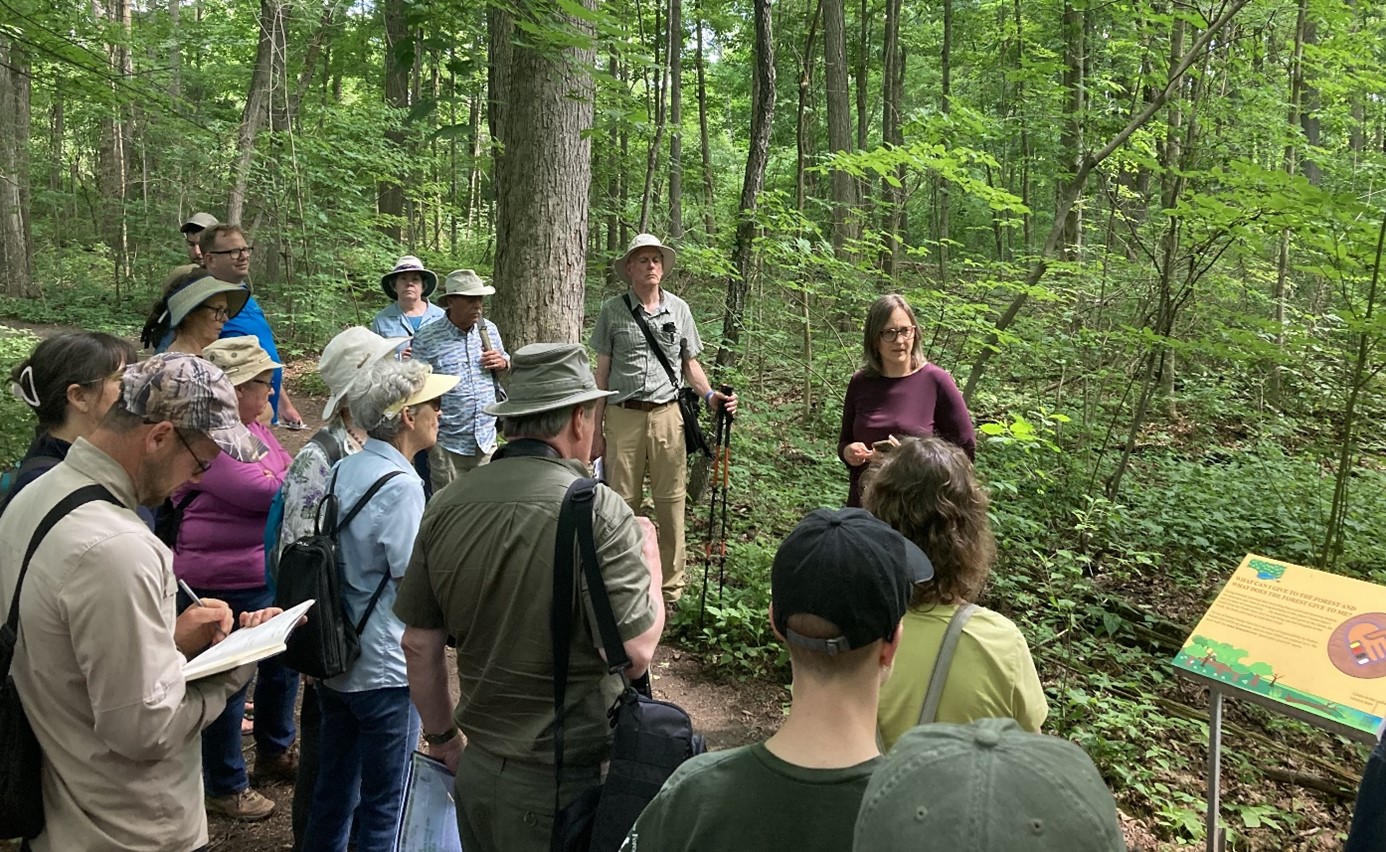
This tour was quite different from the others since most of the stops of interest were within the municipal boundaries of the City of Guelph and even those outside had some affiliation with the City, who through Dave Beaton, Manager of Forestry and Sustainable Landscapes, was a very generous supporter of the tour. A key theme on this tour (and most of the others) was seeing the positive results of visionary actions taken over 100 years ago and witnessing the visionary actions that are being taken today to expand and maintain healthy forest cover across southern Ontario. It should be noted that arriving European settlers over 200 years ago faced a vast and daunting sea of huge trees that ‘needed’ to be removed to allow for farming. They were so efficient that by 1880 some 50% of forests in the south were removed and that number climbed to 99% by 1987. Even back in the early 1900’s, visionaries like Edmund Zavitz realized that eliminating trees from the landscape had gone way too far!
The campus of the University of Guelph, which was originally established as the Ontario Agricultural College 150 years ago in 1874, is located on the original land parcel of 600 acres sold to the government by local wealthy farmer, Frederick Stone for the exorbitant price of $40,000.00. As much of the local land it was generally cleared of trees with the exception of 4 parcels: Brown’s Woods; Dairy Bush; Victoria Woods; and Wild Goose Woods (which was not visited). Most of these small woodlands had been heavily degraded due to cattle grazing, poor logging practices and general neglect for over 100 years, although Dairy Bush, for example, contains some 10% of original tree cover with one maple dated at 335 years. Brown’s Woods is established on an old gravel pit and dumping ground, but you would be forgiven for declaring it a natural ‘old growth’ forest. Dr Doug Larson, Emeritus Professor UofG provided an excellent and very enthusiastic narrative on these remnant campus treasures.
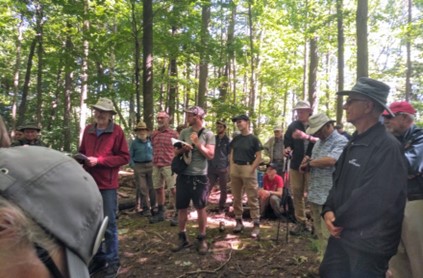
Without the expert guidance of our organizer and FHO Board member Terry Schwan and his very capable network of experts, these remnant parcels of forest history would have been essentially invisible to the average resident. Even those that use these properties for hiking, dog walking and nature viewing would have little idea of their histories and significance. Arguably, Brown’s Woods could be considered the oldest surviving experimental forest in North America and Dairy Woods not far behind.
Marden Creek, which empties into the Speed River and part of the huge Grand River watershed, was a heavily dammed minor waterway that had historically supported healthy populations of Brook Trout as well as grist and sawmills on its banks. In 1999 the Wellington County Stewardship Council committed to getting the trout populations back and went about removing the barriers and draining the ponds. A key though, was to get the riparian trees back on the landscape to provide, among several benefits, shade to keep water temperatures down to allow the trout to thrive…and it is working, the creek is freed for the first time in over 80 years. Larry Halyk a former OMNR Stewardship Coordinator and still very active aquatic habitat volunteer provided an excellent summary of the history of the recovery and all its partners, which includes the Ignatius Jesuit Center which has been very engaged over the last 20 years in getting trees back on the landscape.
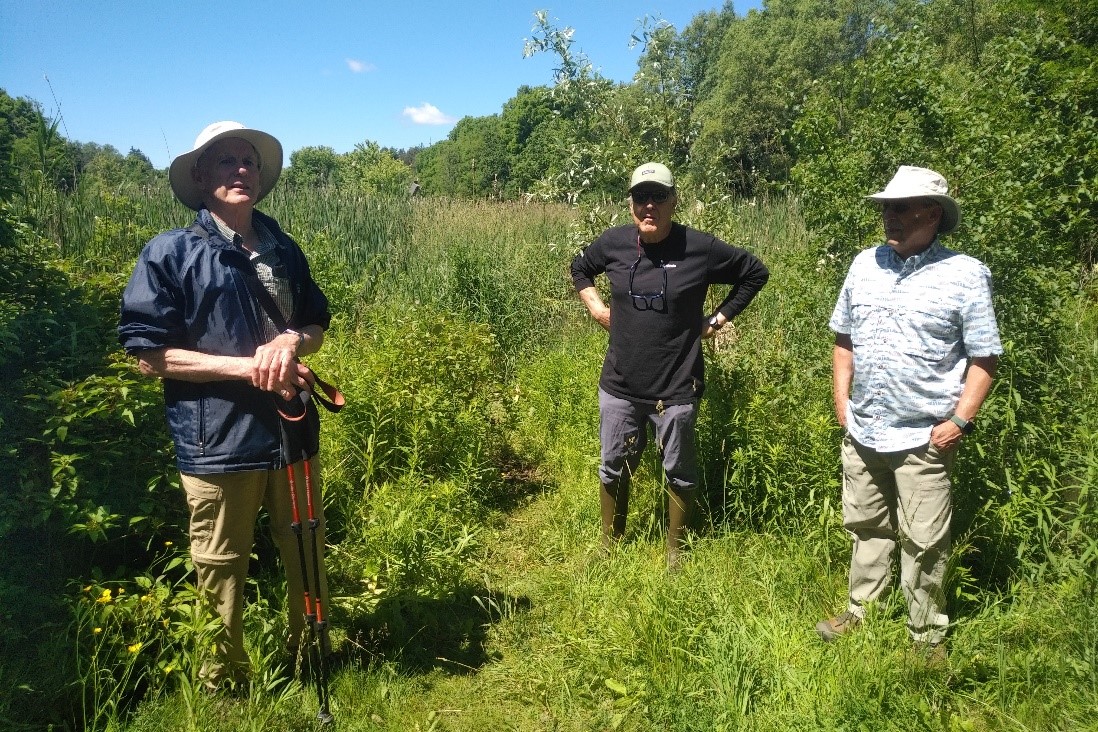
Guelph is the largest community in Canada that is largely (60-70%) reliant on groundwater (series of aquifers) that they vigorously protect starting over 100 years ago by acquiring surface lands and returning them to forests. Some of the early plantings were spearheaded by Edmund Zavitz, who was at the Ontario Agricultural College at the time. This part of the ‘Tour Guide’ (actually a very well researched and drafted historical backgrounders for all the stops) that was provided to all participants and will be posted on a future issue of Forestory. It includes a very well written summary by Martin Neumann of the early indigenous peoples and their influences on the landscape followed by the colonial history from earliest days, to recognizing the city water supply needed protection and assurance of supply. Karen McKeown, from Guelph Environmental Services, an expert on the history of the property described the measures taken to protect and monitor the ‘springs’. Dave Bartam, of Bartram Woodlands, forestry contactor to the City, explained some of the recent reforestation efforts and forestry practices. While originally, the lands acquired to protect the city’s water source were firmly restricted from access, there is much more of a community use and sense of ownership and shared protection and stewardship of these lands. 
A quick stop was made at a vanished (Lost?) forest once the largest agroforestry intercropping experiment in North America. Established in 1989 it was harvested in 2020 partly because it had outlived itsusefulness.
The final stop was back to the arboretum and Victoria Woods, which included a more in-depth history of Edmund J. Zavitz who was instrumental in much of the visionary forestry planting across southern Ontario and particularly in the Guelph area and what is now U of G. Two of the earlier FHO tours (St Williams in 2023 and York/Durham in 2019) featured Mr Zavitz very prominently in that his legacy of southern Ontario forests was unprecedented. Among his many accomplishments, he was commissioned to prepare a report on the wastelands of southern Ontario which illustrated the need for planting of large areas to slow the spread of the blow sands. Facing a huge demand for tree planting stock he also recommended moving the modest OAC nursery to St Williams, which happened in 1909. Its hard to imagine anyone else having that amount of visionary influence on Ontario forestry although Ken Armson comes a close second.
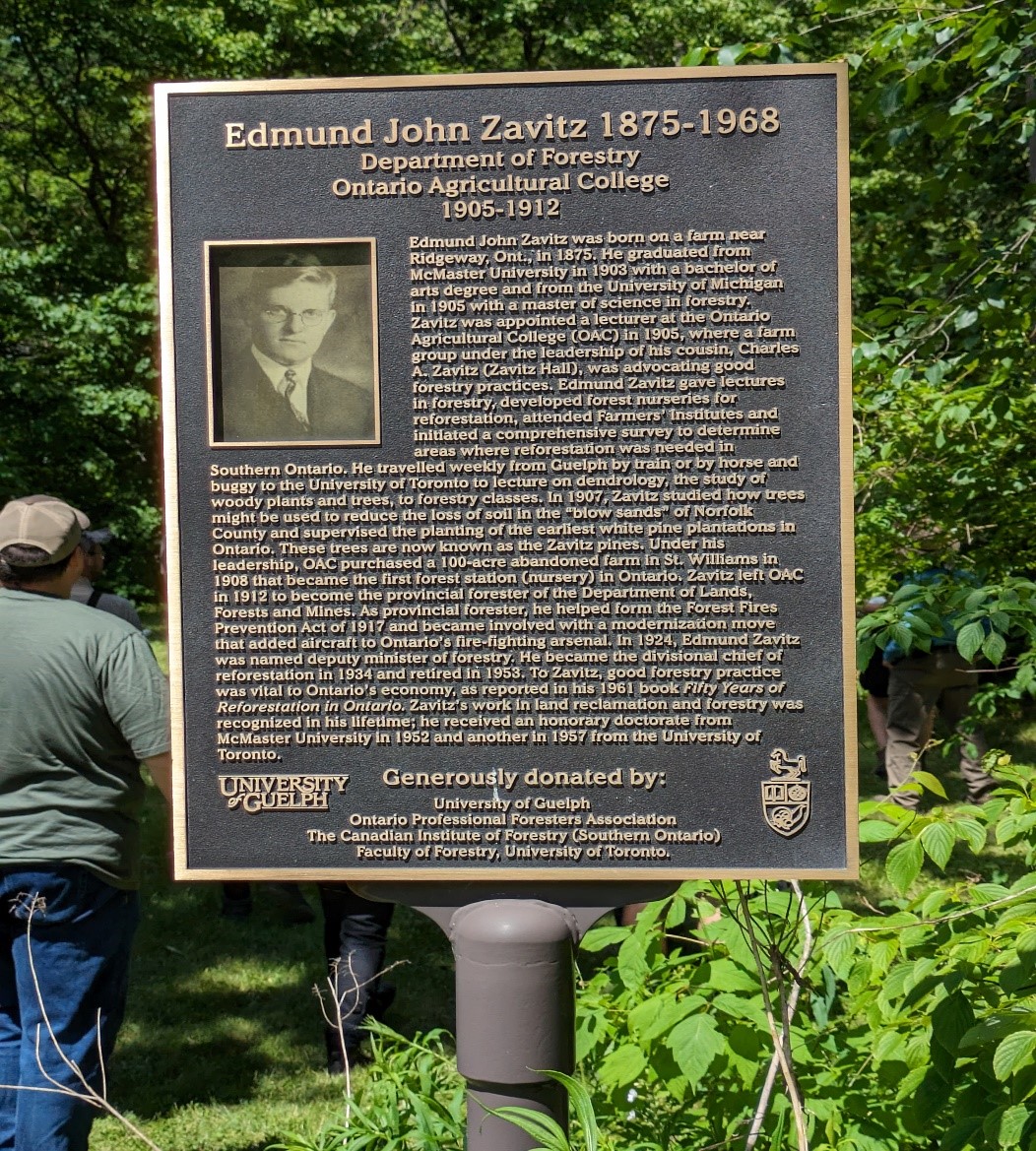
I will leave you with a picture of our masterful tour planner, coordinator and manager holding up a very impressive 60-year-old Cottonwood. 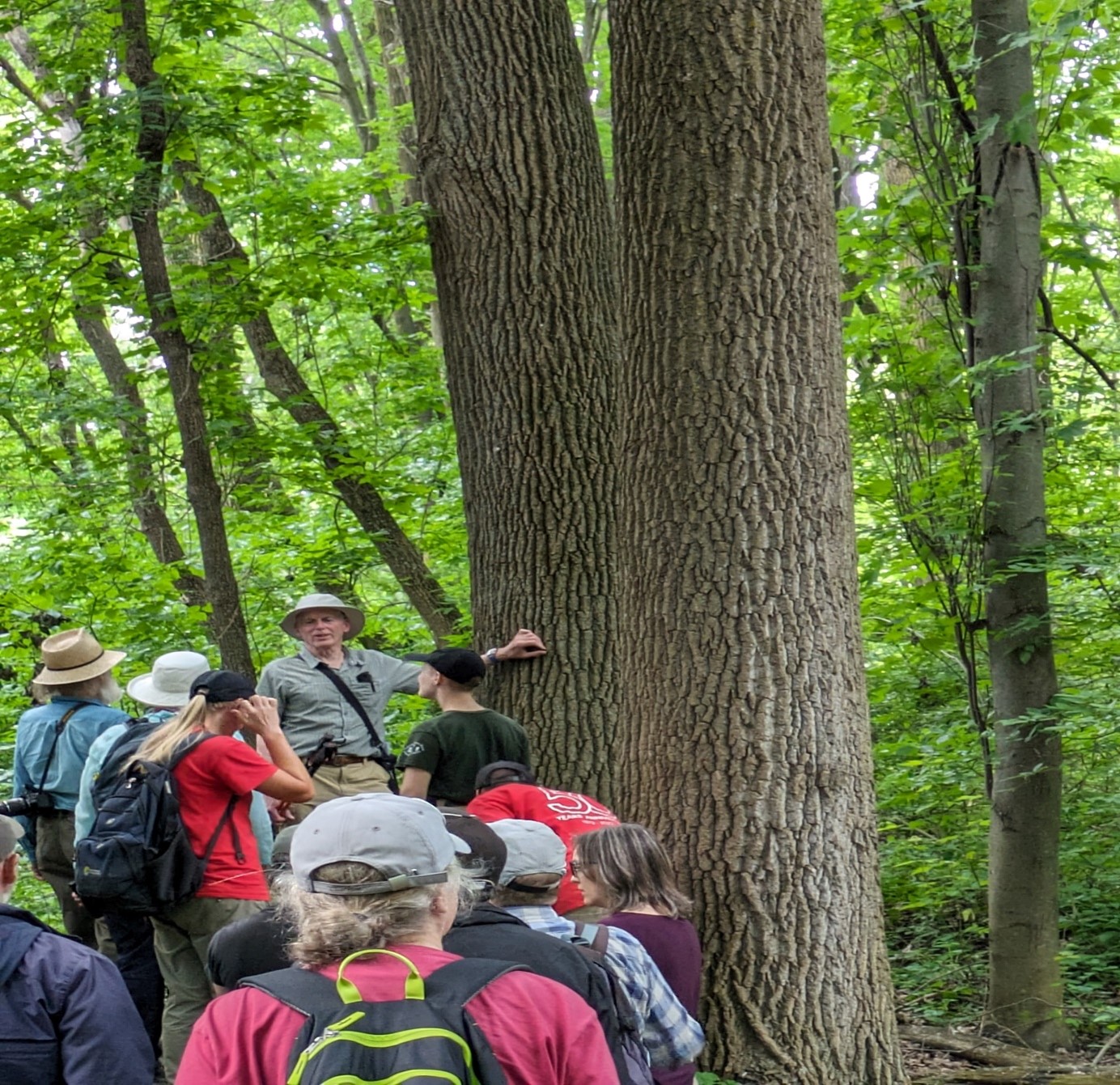
The tour guide will be published in its entirety in an upcoming issue of Forestory which will be available on the FHO website Home (fhso.ca). I can’t imagine a better investment of time than to join an FHO tour. The next is being planned for next year, 2025, in the Dufferin County area…stay tuned.
Jim Farrell, Chair, FHO
Read the full tour guide here: Tour_guide_June_14.pdf
